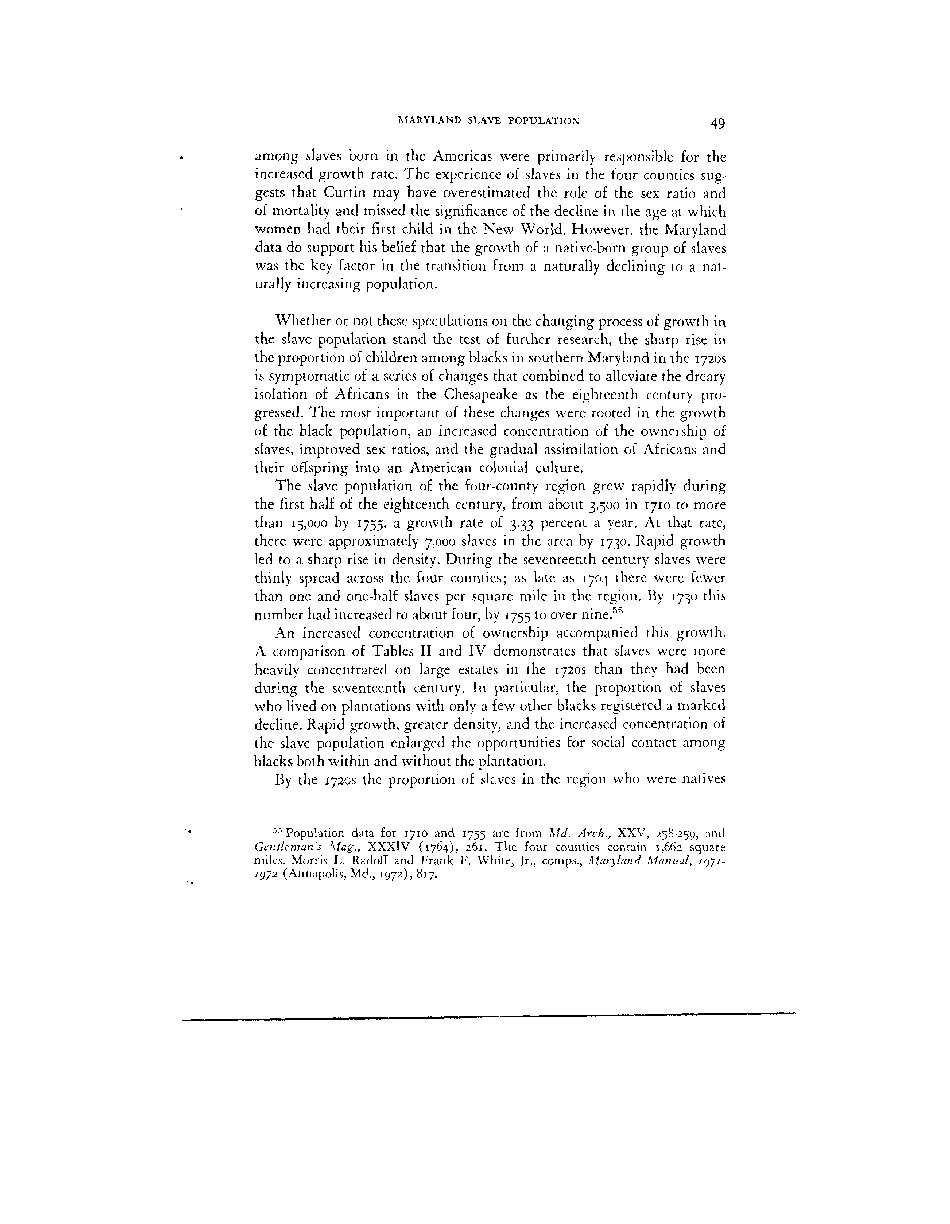|
MARYLAND SLAVE POPULATION
49
among slaves born in the Americas were primarily responsible for the
increased growth rate. The experience of slaves in the four counties sug-
gests that Curtin may have overestimated the role of the sex ratio and
of mortality and missed the significance of the decline in the age at which
women had their first child in the New World. However, the Maryland
data do support his belief that the growth of a native-born group of slaves
was the key factor in the transition from a naturally declining to a nat-
urally increasing population.
Whether or not these speculations on the changing process of growth in
the slave population stand the test of further research, the sharp rise in
the proportion of children among blacks in southern Maryland in the 17205
is symptomatic of a series of changes that combined to alleviate the dreary
isolation of Africans in the Chesapeake as the eighteenth century pro-
gressed. The most important of these changes were rooted in the growth
of the black population, an increased concentration of the ownership of
slaves, improved sex ratios, and the gradual assimilation of Africans and
their offspring into an American colonial culture.
The slave population of the four-county region grew rapidly during
the first half of the eighteenth century, from about 3,500 in 1710 to more
than 15,000 by 1755, a growth rate of 3.33 percent a year. At that rate,
there were approximately 7,000 slaves in the area by 1730. Rapid growth
led to a sharp rise in density. During the seventeenth century slaves were
thinly spread across the four counties; as late as 1704 there were fewer
than one and one-half slaves per square mile in the region. By 1730 this
number had increased to about four, by 1755 to over nine.55
An increased concentration of ownership accompanied this growth.
A comparison of Tables II and IV demonstrates that slaves were more
heavily concentrated on large estates in the 17205 than they had been
during the seventeenth century. In particular, the proportion of slaves
who lived on plantations with only a few other blacks registered a marked
decline. Rapid growth, greater density, and the increased concentration of
the slave population enlarged the opportunities for social contact among
blacks both within and without the plantation.
By the 17205 the proportion of slaves in the region who were natives
55 Population data for 1710 and 1755 are from Md, Arch., XXV, 258-259, and
Gentleman's Mag., XXXIV (1764), 261. The four counties contain 1,662 square
miles. Morris L. Radoff and Frank F. White, Jr., comps., Maryland Manual,
7972 (Annapolis, Md., 1972), 817.
�
|

